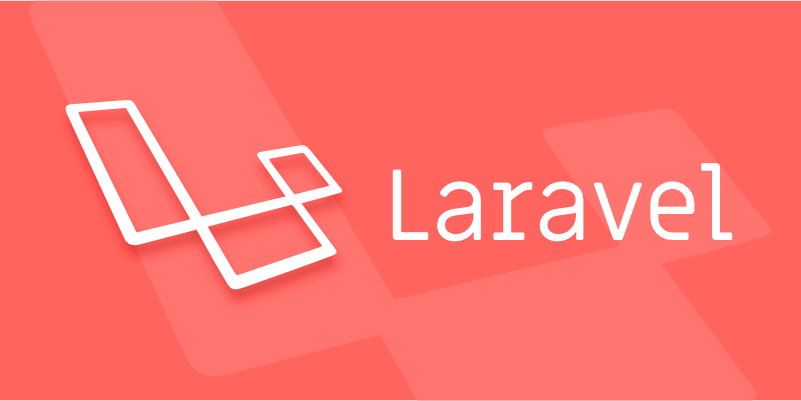What is the difference between events and observers in Laravel?
Jul 29, 2025 am 03:22 AMEvents are used for general application-wide actions, while observers are specifically for Eloquent model lifecycle events; 1. Events are manually dispatched and can be listened to by multiple listeners for decoupled business logic, 2. Observers automatically respond to model events like created or deleted, centralizing model-related logic, 3. Observers are registered via Model::observe() in EventServiceProvider's boot() method, whereas events are mapped to listeners in the $listen array, 4. Under the hood, observers use Laravel’s event system to listen to Eloquent events, making them a specialized form of listeners for models, and both should be used according to their ideal context to maintain clean and organized code.

In Laravel, events and observers are both part of the application’s event system and are used to respond to actions that happen in your application—but they serve different purposes and are used in different contexts. Here's a clear breakdown of the differences:

? What Are Events?
Events in Laravel are something that happened in your application—like "user registered", "order shipped", or "payment processed". They are dispatched (fired) when certain actions occur, and other parts of your app can listen or react to them.
- Think of events as broadcasts: "Hey, this just happened!"
- You dispatch an event.
- One or more listeners can respond to it.
Example:
// Dispatching an event event(new UserRegistered($user)); // Or using the Event facade Event::dispatch(new UserRegistered($user));
You can generate events via:

php artisan make:event UserRegistered
? What Are Listeners?
Listeners are the classes that react to events. One event can have multiple listeners.
Example:
class SendWelcomeEmail
{
public function handle(UserRegistered $event)
{
Mail::to($event->user)->send(new WelcomeMail());
}
}You register listeners in EventServiceProvider:

protected $listen = [
UserRegistered::class => [
SendWelcomeEmail::class,
UpdateUserAnalytics::class,
],
];? What Are Observers?
Observers are a special type of listener that watch for Eloquent model events—like when a model is created, updated, deleted, etc.
Instead of registering individual listeners for each Eloquent event (created, updated, deleted…), you group them into a single observer class.
- Observers are tied to Eloquent models.
- They help clean up model hooks (e.g., boot methods) by moving logic out of models.
Example:
class UserObserver
{
public function created(User $user)
{
// Send a notification, log activity, etc.
}
public function deleted(User $user)
{
// Clean up related data
}
}Register the observer in EventServiceProvider@boot():
User::observe(UserObserver::class);
You can generate an observer with:
php artisan make:observer UserObserver --model=User
? Key Differences
| Feature | Events | Observers |
|---|---|---|
| Purpose | General app-wide actions | Specifically for Eloquent models |
| Triggered by | Manual dispatch (event()) |
Automatic model lifecycle events |
| Scope | Any part of the app | Tied to a specific Eloquent model |
| Events handled | Custom-defined events |
created, updated, deleted, etc. |
| Best for | Business logic across systems | Model cleanup, logging, syncing |
| Registration |
$listen array in EventServiceProvider
|
Model::observe() in boot() method |
?? When to Use Which?
-
Use Events Listeners when:
- You want to decouple actions from triggers (e.g., after registration, do X, Y, Z).
- The action isn't strictly tied to a model change.
- You need flexibility and multiple reactions to one action.
-
Use Observers when:
- You're reacting to model lifecycle changes (CRUD operations).
- You want to keep model event logic organized (instead of cluttering boot methods).
- You have multiple model events to handle (e.g., created, updated, deleted).
? Pro Tip: Observers Use Events Under the Hood
Observers are actually a convenience layer on top of Laravel’s event system. When a model is saved, Laravel fires an Eloquent event (like created), and the observer listens for it.
So under the hood, observers are just specialized listeners for Eloquent events.
Basically, events are the broader system, and observers are a focused tool for working with models. Use both where they fit best.
The above is the detailed content of What is the difference between events and observers in Laravel?. For more information, please follow other related articles on the PHP Chinese website!

Hot AI Tools

Undress AI Tool
Undress images for free

Undresser.AI Undress
AI-powered app for creating realistic nude photos

AI Clothes Remover
Online AI tool for removing clothes from photos.

Clothoff.io
AI clothes remover

Video Face Swap
Swap faces in any video effortlessly with our completely free AI face swap tool!

Hot Article

Hot Tools

Notepad++7.3.1
Easy-to-use and free code editor

SublimeText3 Chinese version
Chinese version, very easy to use

Zend Studio 13.0.1
Powerful PHP integrated development environment

Dreamweaver CS6
Visual web development tools

SublimeText3 Mac version
God-level code editing software (SublimeText3)

Hot Topics
 How to use PHP to develop a Q&A community platform Detailed explanation of PHP interactive community monetization model
Jul 23, 2025 pm 07:21 PM
How to use PHP to develop a Q&A community platform Detailed explanation of PHP interactive community monetization model
Jul 23, 2025 pm 07:21 PM
1. The first choice for the Laravel MySQL Vue/React combination in the PHP development question and answer community is the first choice for Laravel MySQL Vue/React combination, due to its maturity in the ecosystem and high development efficiency; 2. High performance requires dependence on cache (Redis), database optimization, CDN and asynchronous queues; 3. Security must be done with input filtering, CSRF protection, HTTPS, password encryption and permission control; 4. Money optional advertising, member subscription, rewards, commissions, knowledge payment and other models, the core is to match community tone and user needs.
 Guide to matching Laravel routing parameter passing and controller method
Jul 23, 2025 pm 07:24 PM
Guide to matching Laravel routing parameter passing and controller method
Jul 23, 2025 pm 07:24 PM
This article aims to resolve common errors in the Laravel framework where routing parameter passing matches controller methods. We will explain in detail why writing parameters directly to the controller method name in the routing definition will result in an error of "the method does not exist", and provide the correct routing definition syntax to ensure that the controller can correctly receive and process routing parameters. In addition, the article will explore best practices for using HTTPDELETE methods in deletion operations.
 Data_get practice for dynamic access to model association properties in Laravel Livewire
Jul 23, 2025 pm 06:51 PM
Data_get practice for dynamic access to model association properties in Laravel Livewire
Jul 23, 2025 pm 06:51 PM
This article aims to solve how to efficiently and securely access deep properties associated with model through string paths when dynamically rendering data in LaravelLivewire components. When you need to obtain specific fields of the associated model based on a configuration string (such as "user.name"), access using object properties will fail. The article will introduce Laravel's data_get helper function in detail and provide code examples to show how to use it to solve this problem gracefully and ensure the flexibility and robustness of data acquisition.
 How to develop AI intelligent form system with PHP PHP intelligent form design and analysis
Jul 25, 2025 pm 05:54 PM
How to develop AI intelligent form system with PHP PHP intelligent form design and analysis
Jul 25, 2025 pm 05:54 PM
When choosing a suitable PHP framework, you need to consider comprehensively according to project needs: Laravel is suitable for rapid development and provides EloquentORM and Blade template engines, which are convenient for database operation and dynamic form rendering; Symfony is more flexible and suitable for complex systems; CodeIgniter is lightweight and suitable for simple applications with high performance requirements. 2. To ensure the accuracy of AI models, we need to start with high-quality data training, reasonable selection of evaluation indicators (such as accuracy, recall, F1 value), regular performance evaluation and model tuning, and ensure code quality through unit testing and integration testing, while continuously monitoring the input data to prevent data drift. 3. Many measures are required to protect user privacy: encrypt and store sensitive data (such as AES
 How to set environment variables in PHP environment Description of adding PHP running environment variables
Jul 25, 2025 pm 08:33 PM
How to set environment variables in PHP environment Description of adding PHP running environment variables
Jul 25, 2025 pm 08:33 PM
There are three main ways to set environment variables in PHP: 1. Global configuration through php.ini; 2. Passed through a web server (such as SetEnv of Apache or fastcgi_param of Nginx); 3. Use putenv() function in PHP scripts. Among them, php.ini is suitable for global and infrequently changing configurations, web server configuration is suitable for scenarios that need to be isolated, and putenv() is suitable for temporary variables. Persistence policies include configuration files (such as php.ini or web server configuration), .env files are loaded with dotenv library, and dynamic injection of variables in CI/CD processes. Security management sensitive information should be avoided hard-coded, and it is recommended to use.en
 How to make PHP container support automatic construction? Continuously integrated CI configuration method of PHP environment
Jul 25, 2025 pm 08:54 PM
How to make PHP container support automatic construction? Continuously integrated CI configuration method of PHP environment
Jul 25, 2025 pm 08:54 PM
To enable PHP containers to support automatic construction, the core lies in configuring the continuous integration (CI) process. 1. Use Dockerfile to define the PHP environment, including basic image, extension installation, dependency management and permission settings; 2. Configure CI/CD tools such as GitLabCI, and define the build, test and deployment stages through the .gitlab-ci.yml file to achieve automatic construction, testing and deployment; 3. Integrate test frameworks such as PHPUnit to ensure that tests are automatically run after code changes; 4. Use automated deployment strategies such as Kubernetes to define deployment configuration through the deployment.yaml file; 5. Optimize Dockerfile and adopt multi-stage construction
 Deep analysis of matching Laravel routing parameter transfer and controller method
Jul 23, 2025 pm 07:15 PM
Deep analysis of matching Laravel routing parameter transfer and controller method
Jul 23, 2025 pm 07:15 PM
This article deeply explores the correct transmission of routing parameters and the matching mechanism of controller methods in the Laravel framework. In response to the common "method does not exist" error caused by writing routing parameters directly to the controller method name, the article elaborates on the correct way to define routing, that is, declare parameters in the URI and receive them as independent parameters in the controller method. At the same time, the article also provides code examples and suggestions on best practices for HTTP methods, aiming to help developers build more robust and RESTful Laravel applications.
 Laravel routing parameter passing: correctly define the controller method and routing binding
Jul 23, 2025 pm 07:06 PM
Laravel routing parameter passing: correctly define the controller method and routing binding
Jul 23, 2025 pm 07:06 PM
This article discusses the correct posture of parameter transfer of controller method in Laravel routing in depth. In response to common errors caused by writing routing parameters directly to the controller method name, the correct routing definition syntax is explained in detail, and the mechanism of Laravel automatic parameter binding is emphasized. At the same time, the article recommends using HTTPDELETE method that is more in line with RESTful specifications to handle deletion operations to improve the maintainability and semantics of the application.






